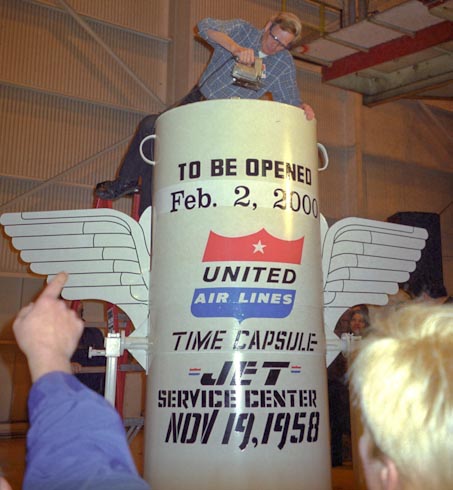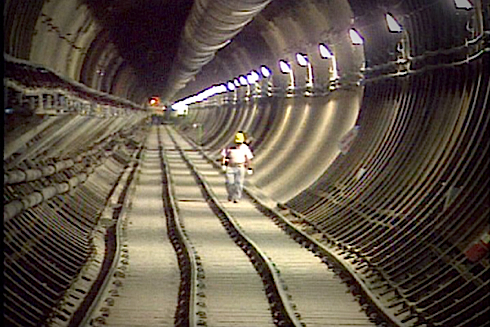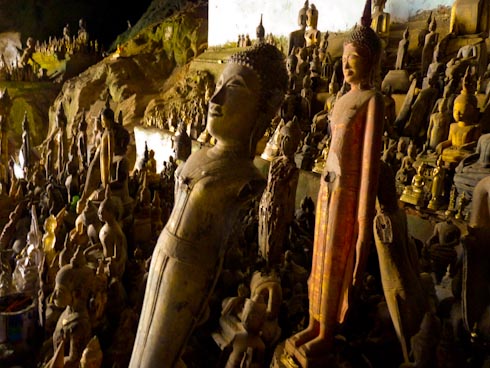A Humanity-Scaled Wiki Time Capsule
I’ve been thinking about time-capsules. Maybe we could use a very large one that could serve as a backup for civilization?

A few years ago I went to visit the Crypt of Civilization in Oglethorpe University near Atlanta, Georgia. The Crypt is a large room, cut below ground out of solid rock, like the interior chamber of a pyramid, then sealed with a welded stainless steel door. All you can see right now is the steel door. It will not be opened until the year 8113. It is probably the most complete, well-thought out time capsule ever, invented by a very imaginative clergyman in 1936, but not packed and sealed off until 1940. It not only has a set of interesting items, but it wisely includes a short course in English so you can read the labels, correctly assuming English won’t be around in another five millennia. It was the inspiration for the much smaller, but more famous Westinghouse time capsule buried in the 1939 World’s Fair in New York.
I’ve researched other time capsules buried in the US and Japan. What I learned from my visit to the Crypt of Civilization is that time capsules benefit from size. There’s a critical mass of stuff needed to make it interesting. Good ones are closer to mini-museums. You want a time capsule to be as larges as possible.
By coincidence I was also able to visit a time capsule being opened. When they were remodeling the San Francisco airport in the early 1990s, they discovered a barrel in the ground. Turned out it was a time capsule buried by airport employees in and designated to be opened in 2000. They set it aside and forgot about it again. Then in another remodel, they rediscovered it, kept it in view, and opened it on time. After much fanfare at the airport the tube was unsealed and inside were a few pilot uniforms, old flight schedules and pamphlets, and part of a propeller.

What I learned from this time capsule was that the objects the curators usually put inside are not very interesting years later. In that respect, most highly curated time capsules fail.
So what about a really huge time capsule that could hold all manner of uncurated objects from our modern society and keep them dry and safe for thousands of years?
We already have a container for that: Yucca Mountain, Nevada. Here we’ve cut several miles of large-bore tunnels in the unfinished Nuclear Waster Repository site. For political reasons it is unlikely that Yucca Mountain will ever be used to store nuclear waste. However, technically, this huge $1 billion hole is perfect for long-term storage of everyday artifacts.

I also took a tour of this facility, and it’s perfect for a gigantic time capsule. It’s big, remote, dry, dark, and stable. Scientists have used another $8 billion proving that geologically no water, no movement will disrupt stuff in this hole for thousands of years. Opponents to nuclear storage feel that is not long enough for atomic waste, but its plenty of time for a time capsule!

Now that we have a site, here is how an open-sourced humanity-scale wiki time capsule would work.
Anyone can bring anything they think is important to keep into the capsule. If you think it is important to keep, then it is. The cave is big enough that it will hold whatever you can carry. All you have to do is transport it to Yucca Mountain, Nevada. Then find a place in the tunnels to leave it. There it will remain for thousands of years. Thus the curation of the contents is self-organized in a wiki kind of way. The junky bits that visitors find uninteresting and worthless will only inspire others to find and deposit more interesting stuff. There will even be intense competition to store the most useful, historically relevant material. Over time what is “better” will be learned and the criteria can be posted as encouragement.
One downside that will drive archivists crazy is that there is no central log of contents, no enforced organization for locations of deposit, no index of where to find stuff. You might spend days looking for something you think or even know is there. But I suspect that a natural organization would emerge. Not 100% fool proof, but birds of a feather would tend to group together. If you were hauling in a popular bicycle for inclusion you would tend to either leave it where other bicycles were, or where other sports equipment was, but not where telescopes pile up. For sure there would be mystery items, and things hidden deliberately, but hunting for gems would be part of the great joy of visiting this wiki-museum.
But how to keep the good stuff? The rule is you can bring anything in, but once in, nothing leaves. This is a one-way time capsule. Stuff comes in, nothing ever goes out. Perhaps it will take a few armed guards to prevent theft, but it is more likely that a never-ending stream of visitors and users can prevent vandalism, in that wiki way. Constant use is the best guard.
There should be no commerce within the hole. Nothing is paid for. But outside the time capsule, there would likely emerge a year-round flea market and bazaar of goods being traded. This might generate enough cash to keep security posted at the entrance to prevent deposits from leaving. And photographic images by thousands of visitors would also generate a record of what is there (and what is missing).
It is possible that “one of everything” might gradually accumulate in this ark — one of every species of artifact. Obsessive collector types might spend their energies scouring the world for specimens to complete a full collection that dwells in the tunnels rather than in their bedroom. They might even hammer together their own displays of such, stacked up to the roof.
There’s a cave in Laos, full of small Buddha statues brought by pilgrims that operates in this way, and the result is far more orderly than one would expect.

Conceptually this type of collection is less like time capsule — closed until a designated opening date — and more like a museum. But like Wikipedia which throws nothing away (no text is erased, just moved into the logs) and in which anyone can add, this open-sourced collection which throws away nothing and to which anyone can add will act more like a summation of what we have, rather than a select display of what we thing is best.
That’s a key difference. This would be a wikipedia of artifacts. Almost every corner of our human activity would be included and preserved, not just what was considered by the experts to be important. This corrects the very problem that provoked Thornwell Jacobs to invent the Crypt of Civilization, the first time capsule, in the first place. Jacobs was struck by how pitiful and weird the contents of Egyptian tombs were. Here they literally moved mountains to preserve artifacts for thousands of years, and they left us what? Some toys, jewelry, and furniture? And why so little? Jacobs would think ahead and preserve much more, and more historically meaningful things. Of course we look at his list today and wonder what he was thinking. But if you had everyone working on their own list, that collective, emergent ensemble would most likely capture what was needed by the future. Some weird fanboy in Argentina, or fan girl in Lebanon today is paying attention to the very thing a historian of the year 2311 will want to know about this time.
In the year 2311 I would love to take a road trip to the caves of Yucca Mountain to visit the world’s attic, to see what had piled up there over three hundred years. Mail order catalogs from the 1980s, Bollywood street posters from the 1990s, DNS traffic tables from the 2000s, Chinese forums from the 2010s, African mobile wallets from the 2020s, and disposable augmented reality glasses diaries from the 2030s. What tales from history!!!
And this wiki time capsule would hold not just tales of history, but also be a library of accomplishments, a museum of examples, a catalog of possibilities, and a backup of things that work, in case such a backup should be needed.


